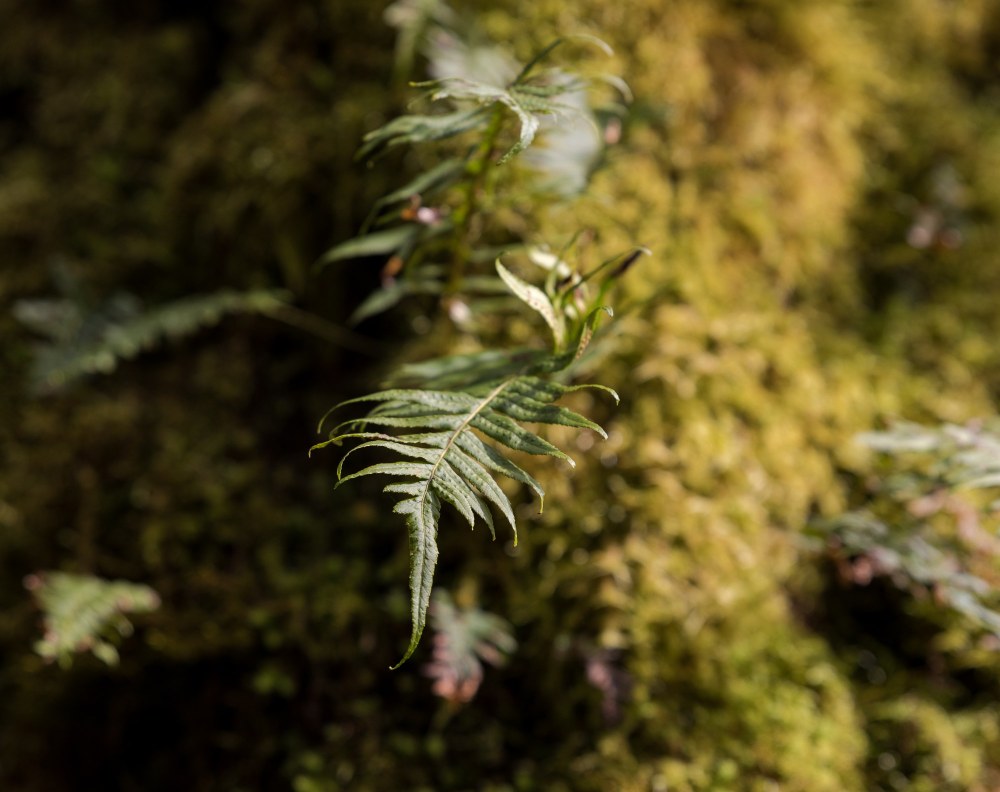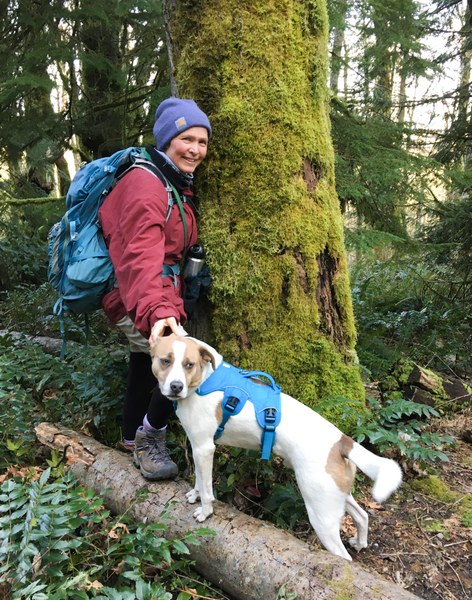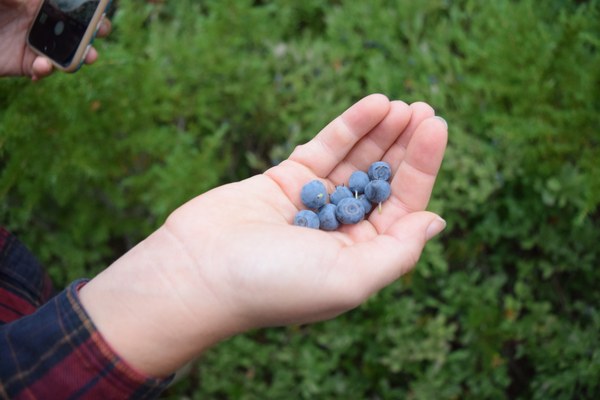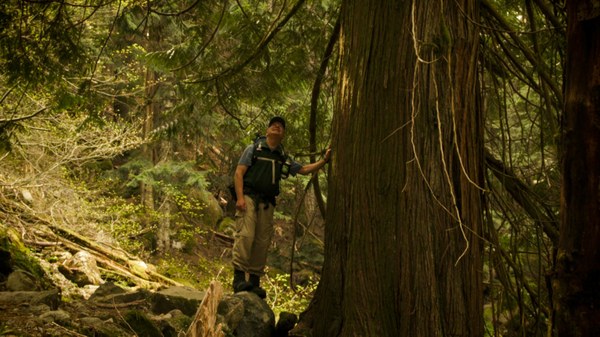
Forest bathing, or shinrin-yoku, is a Japanese nature therapy practice to help individuals develop strong connections with nature and reap the physical and emotional benefits that this connection provides. Although its roots are far older, the modern understanding of this practice began in 1982 when the Japanese Ministry of Agriculture, Forestry and Fisheries instituted a national forest bathing program. Now gaining traction internationally, forest bathing is a tool that many are beginning to explore. Read on to learn about one member’s experiences, and steps you can take to begin your own forest bathing journey.
Exploring forest bathing has been one of many touchstone experiences on my two-year journey towards a better life balance, deeper self-discovery, and a recovery from addictions to sugar and exercise. This Japanese practice of self-care and mindfulness involves opening your senses to all that the forest has to offer, without the need to get to the top or finish in a specific time. As a self-proclaimed doer, meditation in its many forms never held my interest until now.
In early spring 2021, I joined a small group for periodic forest bathing walks at a local park. Our leader, a woman with two-toned hair and a melodic voice, explained that our practice over the next two hours would be to explore our five senses, let go of our worries, and return to “the world” renewed and refreshed. It sounded blissful, and although skeptical, I was curious and willing to try it.
 Courtenay and her trail companion, Ajax, on Tiger Mountain. Photo by Grace Parker.
Courtenay and her trail companion, Ajax, on Tiger Mountain. Photo by Grace Parker.
A new experience
Our guide led us to a shady spot surrounded by trees where we formed a socially distanced circle. We were, after all, still coping with a pandemic. She instructed us to keep a soft gaze as we gently twisted to look behind us in both directions, and then looked up, familiarizing ourselves with the shapes, textures, light, colors, sensations, and sounds surrounding us. She offered us a dab of a pine-scented essential oil to help us drop into a parasympathetic “rest and digest” state. She invited us to focus our attention on something that made us happy or curious.
On my first visit, I enviously watched as several hikers made their way to the top of a distant knoll behind us. I longed to join them and explore the view from the top. But I had agreed to try something new. I squelched the “doer” urge to reach the top and stayed with the group, trusting that I’d experience something new if I gave it a solid try. Following subsequent visits, I was indeed rewarded with new insights I could apply to my daily life, my job as a coach, and my passion for writing.
During the second visit a week later, I was eager to see what else I could learn. I realized something inside me had already shifted when we repeated the first exercise. As I leaned against a peeling red-bark tree I dubbed Magic Madrone, I mulled over my upcoming surgery for removal of a basal cell carcinoma. I pictured myself free of cancerous cells, summoning the tree’s strength to confront the challenges ahead.
At the dermatologist four days later, as the local anesthesia containing epinephrine caused my heart rate to spike, I imagined the feel and smell of the mossy branches to manage my escalating pulse. I was delighted to realize my short foray into forest bathing was already making a difference.
Arboreal friends
Our guide gave us another invitation for exploration: find a “non-human being” to study up close.
I wandered through the forest feeling moss and bark on trees until I spotted a large Douglas fir with deeply grooved bark and sturdy bare branches at the very top, much like I imagined its root ball extending beneath my feet. Unlike all the younger trees with thin branches that danced in the breeze, this one stood stoically with an air of mystery, like a wise grandparent.
For some reason, the name Beatrice popped into my head, but it felt wrong to give a tree a human name. I didn’t know anything about this beautiful tree other than it spoke volumes without saying a word. Beatrice quickly morphed into Be-a-tree.
Befriending Be-a-tree and Magic Madrone felt both odd and compelling. On subsequent visits, I knew exactly where both stood and how to identify them, and I made sure to send both trees a friendly hello. So much of my three decades of hiking experience has been about getting to the top on tried-and-true paths. This was different, and it was delightful.
Tasting the forest
The sense that is most under-utilized during forest bathing is, understandably, taste. Our guide introduced us to several ways to explore it. As we strolled into the forest, she taught us how to gently harvest tiny boughs of cedar (toward the trunk, so we wouldn’t damage the branch) to fill our noses with their scent and, later, sip tea she steeped from fresh fronds. At the end of each day, we enjoyed a small pouch of freeze-dried blackberries, a square of organic pure 100% cacao, and a couple ounces of cedar tea. All treats harvested from non-human friends.
 Blueberries found on a Mountaineers Youth trip. Photo by Mountaineers Summer Camp staff.
Blueberries found on a Mountaineers Youth trip. Photo by Mountaineers Summer Camp staff.
Reflection
Our final experience on each visit was to find several mementos from the forest floor to place on a centerpiece as a symbol of our time in the woods. Trusting that something would draw my attention, I strolled along a dry streambed. On a flat boulder, I left two half maple seeds as eyes with a round pebble as a nose and a bit of moss as a smile. I brought back a plain, worn, round pebble and an angular, layered, moss-covered rock.
I thought about Magic Madrone, Be-A-tree, a cawing raven that flew overhead, and an Anna’s hummingbird that visited me during one of our exercises. I reflected on my own journey during the past two years and how much I’ve changed, free from sugar, exercise addiction, and skin cancer.
When it was my turn to share, I said the round pebble signifies the “go-go-go” me, before forest bathing. Eroded, worn-out, smoothed over. The moss-covered rock, on the other hand, has roots and presence. It’s not afraid to sit and be what it is. Both belong in nature, just as the “doer” and the “thinker” reside within me, but on this day, I recognize the mossy rock as a more authentic symbol of who I am becoming: a dendrophile.
Forest Bathing Activities
Eager to dip your toes into forest bathing? Try one of these activities to slow down and tune into the sights, sounds, smells, and more around you.
Crossing the threshold: For your first visit, set aside 15 or 20 minutes and find a forest or tree-rich park to walk through with no objective other than to engage all of your senses and pay attention. Choose something to mark your entrance into and exit from the woods, such as walking across crunchy gravel, circling or hugging a particular tree, or opening and closing a gate. As you enter the forest, set your intention to become childlike again, much like discovering the forest for the very first time. You are!
Gentle gaze: As you head into the forest, see if you can expand your peripheral vision or awareness beyond the “tunnel vision” we get used to from extended screen time. Shift your eyes ten to fifteen times left and right, as far as you can without moving your head. Then look up into the canopy and beyond the highest branch. When you look down again, stretch your gaze as far into the forest as possible. Bring your attention back to an object within several inches of you. Now, try “seeing” all that you spotted at once. How long can you maintain this “gentle gaze?”
Sit spot: Find a place you can sit quietly for five minutes. What sounds can you hear from your spot? What happens to your breath, to your muscles, to your thoughts as you listen? How do the sounds make you feel? Can you distinguish between how manmade and natural sounds affect your body? If you participate with a friend, at the end of your exercise, share what each of you noticed.
Sink into smells: Get up close and personal with an object of interest such as a cedar tree, a branch covered in moss, a flower, or a muddy riverbank. What smells in the forest appeal to you and why? Do they remind you of anything in your past? Do they evoke any other sensations or emotions for you?
Color cues: While you’re in the woods, close your eyes and turn directly toward the sun, then imagine whatever color you like as vividly as you can. Turn from the sun and when you open your eyes, see if you can spot something of that color. Try this from the same spot, with three or four colors. If you can’t find anything of a certain color, go on a “color hunt” to try to find it.
Found object: To engage your sense of touch, pick up something that speaks to you, such as a round pebble, a whole pinecone, or a fallen piece of bark or lichen. Carry it with you as you wander. What appeals to you about that object? Is it the weight, texture, or temperature? Can you connect it to your current stresses in “the real world” and find peace, strength, joy, or comfort from it? If you like, place it in a memorable spot near your chosen threshold, and see if it’s still there when you return on your next visit.
 A hiker enjoying a stately old cedar tree. Photo by Mike Short.
A hiker enjoying a stately old cedar tree. Photo by Mike Short.
This article originally appeared in our Summer 2021 issue of Mountaineer Magazine. To view the original article in magazine form and read more stories from our publication, visit our magazine archive.
LEAD IMAGE OF Foliage on the Baker Lake Trail. Photo by Gabe Purpur.
Add a comment
Log in to add comments.A special shout out to my Neo Forest Bathing guide, Chloe Lee, who developed nuances on the "slowly walking" techniques taught in Forest Bathing and referenced in this article. For more about her experiences, visit her website at www.chloejanelee.com. I highly recommend her walks in the Seattle area. Thanks, Chloe!
 Courtenay Schurman
Courtenay Schurman